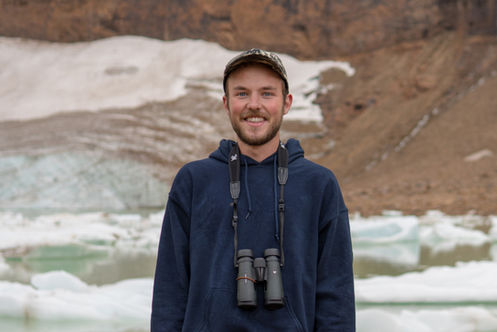
Advanced RS: free-to-grow to thinning stage
OB 2
Hub: Romeo Malette, ON; Quesnel, BC
Year: 2021-2025
Liam Irwin, PhD
Recent advances in high spatial resolution imaging with drone based lidar can provide accurate height and structural estimates of regenerating vegetation in a repeatable way. For these methodologies to be implemented in commercial operations, solutions need to be developed for the complex conditions observed in Canadian stands past the ‘free-to-grow’ stage.
The objective of this PhD will be to determine how to best use these newly available data sources to monitor stand development between the free-to-grow stage and the time of commercial thinning operations at the operational stand levels. Focussing on spruce and pine stands in the RMF, and QN Hub sites, drone surveys will be conducted across age cohorts of varying productivity and silvicultural origins. Outcome: New workflows to process drone based lidar for mid-rotation stand assessment, assessment of detection capacity for species, height, and density, identification of areas where silvicultural interventions could help achieve growth potential on a site.
Liam Irwin, PhD at University of British Columbia
Main Partner: Ministry of Natural Resources and Forestry (Ontario)
Professor Nicholas Coops
Collaborators: Doug Reid (MNRF-ON)
Wotherspoon, A.R. Moreau, G., Morin-Bernard, A., Achim, A., Coops, N.C., Villemaire-Côté, O., Irwin, L.A.K., Hagerman, S., Thiffault, N., Colton, C., Eskelson, B.N.I., Fortin, M., Barbeito, I., White, J., Roy, V., Byrne, K., Roeser, D. 2025. Challenges in teaching silviculture in Canada: the path forward. Canadian Journal of Forest Research. 55: 1-19. https://doi.org/10.1139/cjfr-2025-0081
Irwin, L.A.K., Coops, N.C., Riofrío, J., Grubinger, S.G., Barbeito, I., Achim, A., Roeser, D. (2024). Prioritizing commercial thinning: quantification of growth and competition with high-density drone laser scanning. Forestry: An International Journal of Forest Research, cpae030. https://doi.org/10.1093/forestry/cpae030
Goodbody, T.R.H., Coops, N.C., Irwin, L.A.K., Armour, C.C., Saunders, S.C., Dykstra, P., Butson, C., Perkins, G.C. (2024) Integration of Airborne Laser Scanning data into forest ecosystem management in Canada: Current status and future directions. The Forestry Chronicle, 100(2):1-21. https://pubs.cif-ifc.org/doi/10.5558/tfc2024-014.
Irwin, K., Coops, N.C., Riofrio, J., Barbeito, I., Gubringer, S., Achim, A., Roeser, D. (2023, 2024) Quantifying tree-level drivers of tree growth in high density managed stands with drone lidar. SilviLaser Conference Presentation.
Irwin, L., Coops, N.C. , Roussel, J.R., Achim, A. (2022) Evaluating fine-scale forest competition and structural assessments with drone based lidar; A case study in dense Canadian operational conditions before and after thinning treatments. ForestSAT Conference Presentation, 30 august, Berlin, Germany
Irwin, L., Coops, C.C., Queinnec, M., McCartney, G., White, J. (2021) Single photon lidar signal attenuation under boreal forest conditions. Remote Sensing Letters, 12(10). https://doi.org/10.1080/2150704X.2021.1962575
